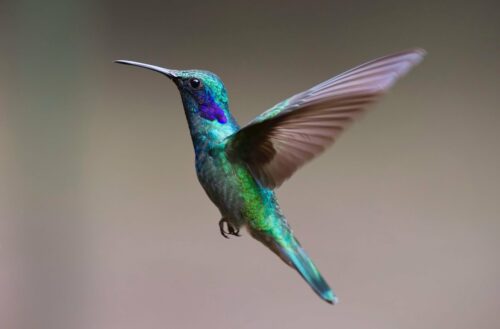Image courtesy of Pixabay.
What comes to mind when you think of hummingbirds? You might think of their rapid heart rate. Or maybe their lightning-fast wing speed. But hummingbirds have another superpower under their beak: color.
Bird feathers, known as plumage, display many hues. Researchers at Yale University calculated the hummingbird plumage color gamut, a value representing the color diversity of hummingbird plumage as seen by other birds. Birds see ultraviolet and visible light, whereas humans can only see the latter, so human vision falls short when considering hummingbird plumage.
Gabriela Venable (YC ’19), a researcher on the study, spent hours at the Peabody Museum and American Museum of Natural History using a spectrometer to gather colorful spectra from 1,600 plumage patches on 114 hummingbird species. “We can plot the spectra into a [model accounting for bird vision] and calculate the volume from all the points in the model, and that can measure color diversity,” Venable said.
The data revealed that the hummingbird gamut was, in some aspects, more diverse than the previously calculated gamut of all other birds combined. One justification points to hummingbird barbules, which are micro-structures in a feather. “[Barbules] allow [hummingbirds] to make saturated colors and many different color combinations,” Venable said. This strengthens hummingbird evolutionary benefits, like defending floral patches or attracting mates.
Though they discovered new information about coloration mechanisms in birds, there is still work to be accomplished. As the first study targeting one family of birds, this research facilitates more in-depth analyses of plumage color diversity and increases the accuracy of the calculated avian color gamut.

